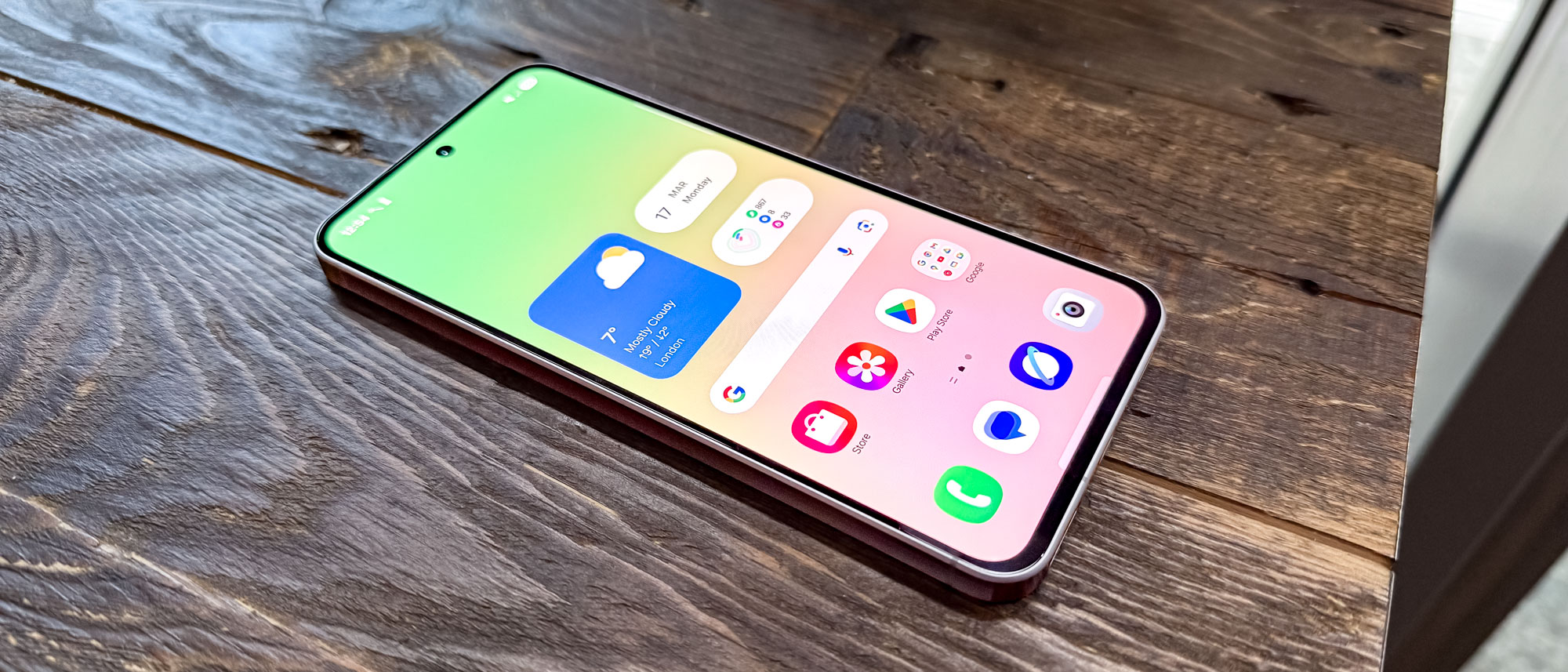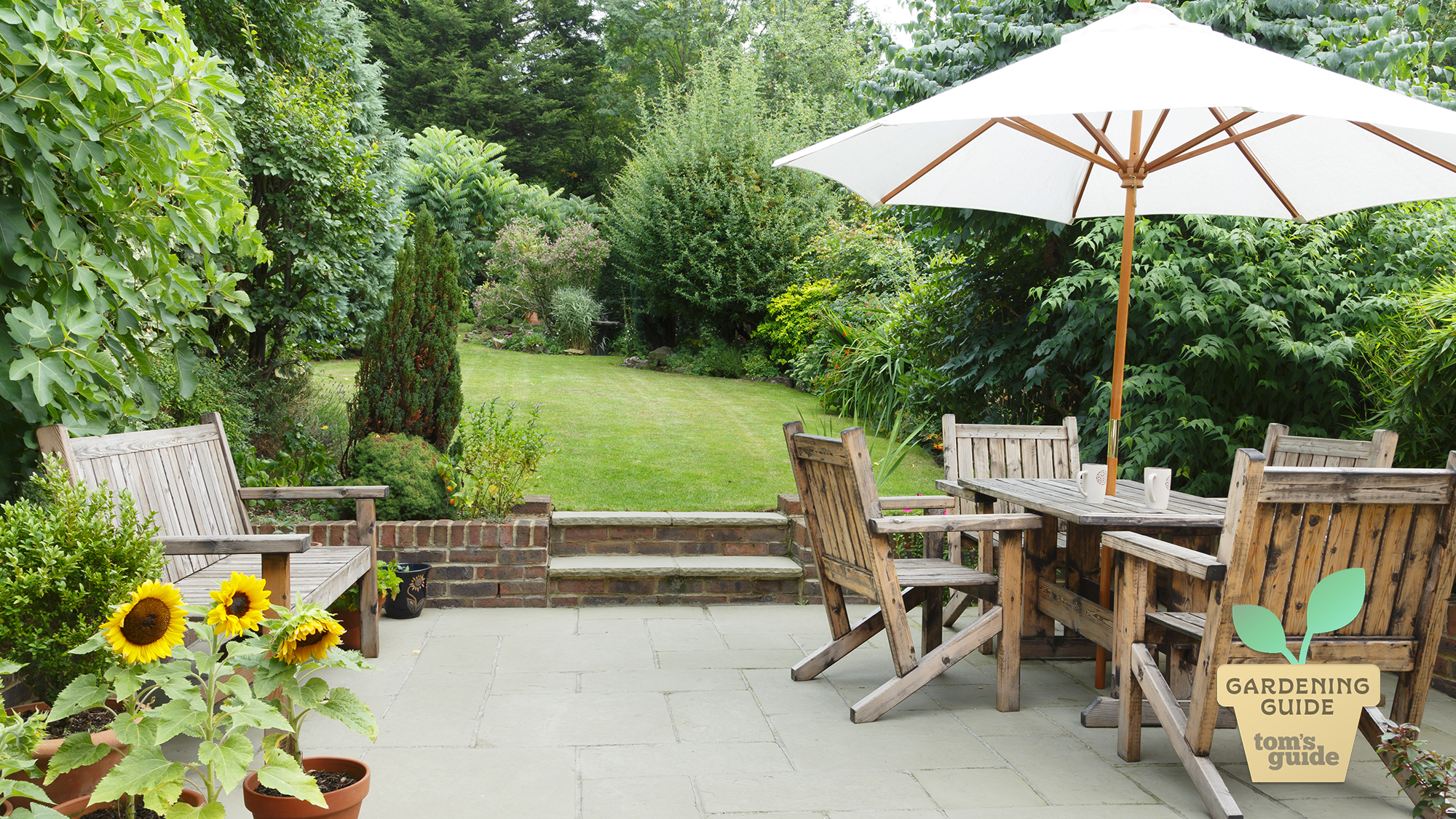Tom's Guide Verdict
It's a busy mid-priced phone market out there right now, and the Galaxy A56 might struggle to make an impact due to lacking any killer features. But luckily, it does a good to great job at everything apart from computing performance, meaning it remains an excellent value if you were to pick it up.
Pros
- +
Low price kept from last year
- +
Double the default storage of rivals
- +
Long-lasting battery and flagship-grade charging
- +
Some AI features
Cons
- -
Significant performance deficit compared to similar phones
- -
Macro camera not useful
Why you can trust Tom's Guide
Samsung probably mistimed the launch of the Galaxy A56, considering how many other manufacturers have launched phones in the $400-600 bracket in the past few months. But if you can find it in the crowd, the new top player of Samsung's budget line-up has a whole lot to offer.
As a full-sized phone with plenty of storage, an attractive display, some of the AI features that set Samsung's flagship phones apart, and most importantly a price that's remained stable since last year, only users who want the most performance per pound, or better-rounded cameras, will question the value proposition Samsung is laying down.
But with the new Google Pixel 9a and outgoing Pixel 8a, not to mention the Nothing Phone 3a Pro and the iPhone 16e all vying for your attention, why would you go for the Samsung-made option? Read to the end of this Galaxy A56 review, and you'll learn why.
Samsung Galaxy A56: Specs
Starting price | $499/£499/AU$699 |
Display | 6.7-inch FHD+ |
Refresh rate | 120Hz |
Main cameras | 50MP main (f/1.8), 12MP ultrawide (f/2.2), 5MP macro (f/2.4) |
Front camera | 12MP selfie (f/2.2) |
Chipset | Exynos 1580 |
RAM | 8GB |
Storage | 256GB, no microSD support |
Battery | 5,000 mAh |
Charging | 45W wired |
Operating system | Android 15 with One UI 7 |
Dust/water resistance | IP67 |
Size | 162.2 x 77.5 x 7.4mm / 6.39 x 3.05 x 0.29 inches |
Weight | 198 grams / 6.98 ounces |
Colors | Graphite, Light Gray, Olive, Pink |
Samsung Galaxy A56: Price and availability
You'll have to part with $499, £499, or AU$699 to get a Galaxy A56, depending on where you're reading this. Whichever currency you're spending, you're getting 256GB storage by default. It's unfortunate that there's no option to spend more to further expand the storage capacity, but having twice as much storage as the Galaxy A55 from last year without costing a penny more is the kind of upgrade we treasure.
Launch day happened on March 19 for Europe, and it will launch in Australia starting on March 27. There's still no confirmed date for U.S. shoppers to put in their order, but the A56 is still coming to the States at some point, Samsung promises.
Samsung Galaxy A56: Design and display
Like a fiercely independent teenager refusing to dress like their parents, the Galaxy A56 has moved away from the Galaxy S-style design that the Galaxy A55 had and now sports its own unique look along with the other Galaxy Ax6 models.
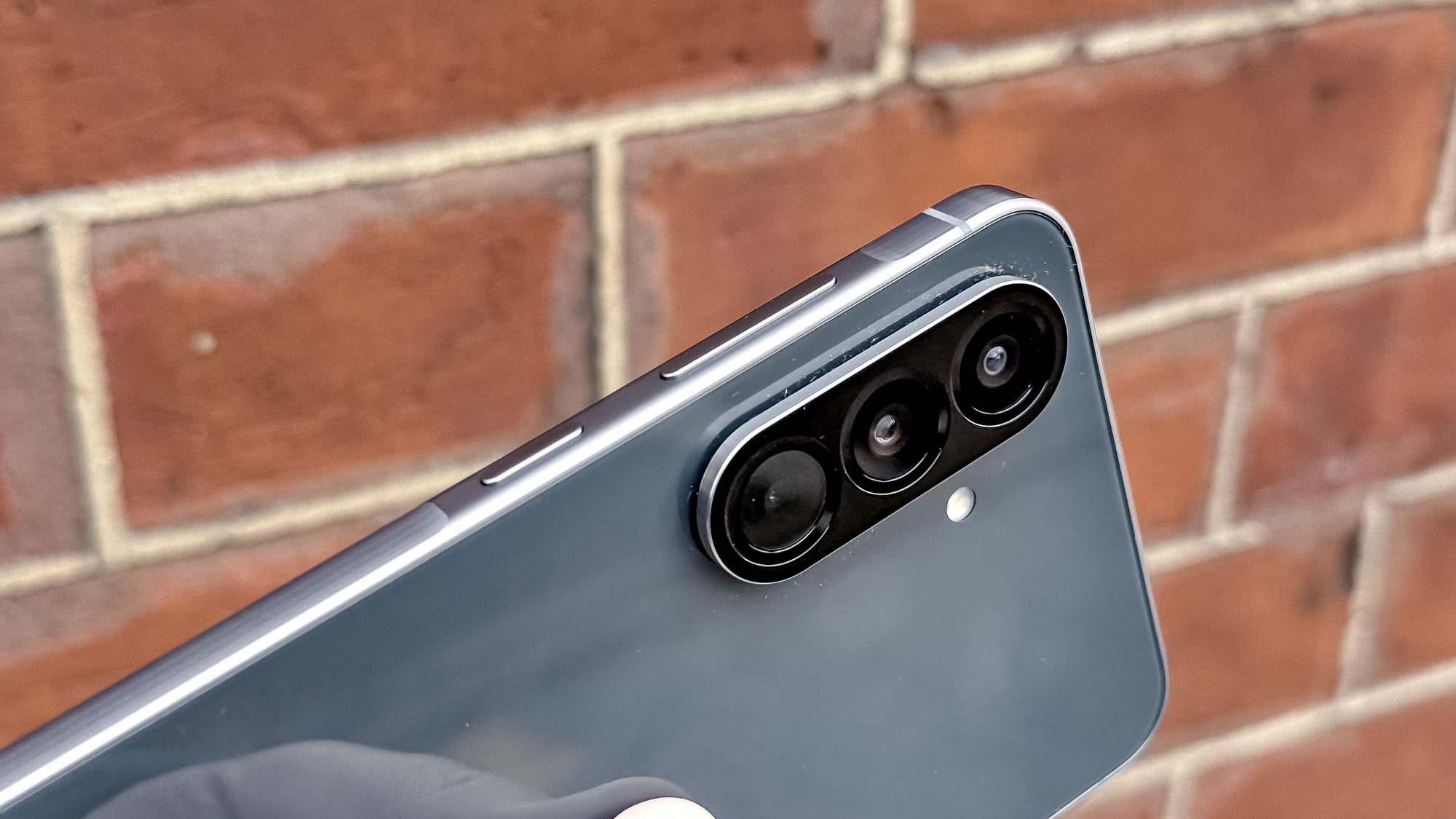
The side rail again contains the raised Key Island section to give the buttons more prominence, which we saw on the A55. But now the back uses a new unified camera block, with the three sensors surrounded by a pill of aluminum.
The Galaxy A56 is rated IP67 for dust/water resistance, the same as the Galaxy A55 but behind the IP68 of most flagship phones like Samsung's own Galaxy S25 series. Similarly, the A56 shares the A55's Victus Plus glass front and back panels, which is still tough but not as tough as the Victus 2, Victus 2 Plus or Gorilla Armor glass types that have debuted more recently.
The one issue I have, and only a minor one, is the glossy finish of the rear of the phone. Most phones use textured glass or plastic that makes it hard to notice finger marks, but not the Galaxy A56, whose back panel looks like a French door installed in a kindergarten after only minutes of use.
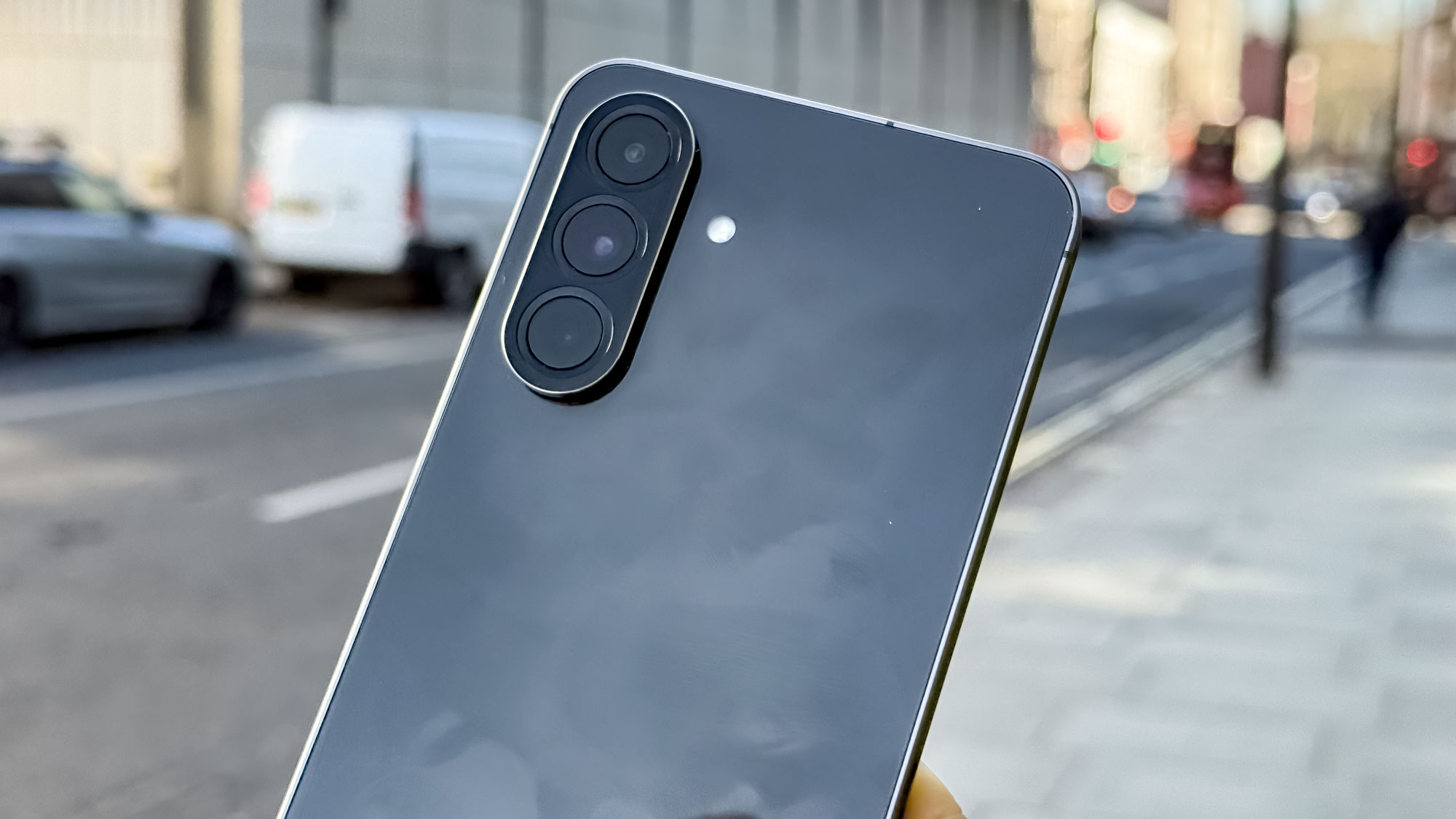
All the photos (except the one above) you see in this review were preceded by a vigorous polishing with a microfiber cloth, and even then it's all too easy to miss parts that remain super visible.
The color selection for the Galaxy A56 is a direct split between sensible and spunky. Graphite and Light Gray are available for the sensible, giving the A56 a dignified look, while the Olive and Pink are there for people who want to make a statement.
The Galaxy A56 sticks with a 6.7-inch FHD display like its predecessors, albeit with the bezels slimmed down compared to the Galaxy A55. You can still tell this isn't a premium display by the remaining thickness of the screen borders, but it's bright and colorful, and significantly larger than what you get on the Pixel 8a or iPhone 16e, both using 6.1-inch panels.
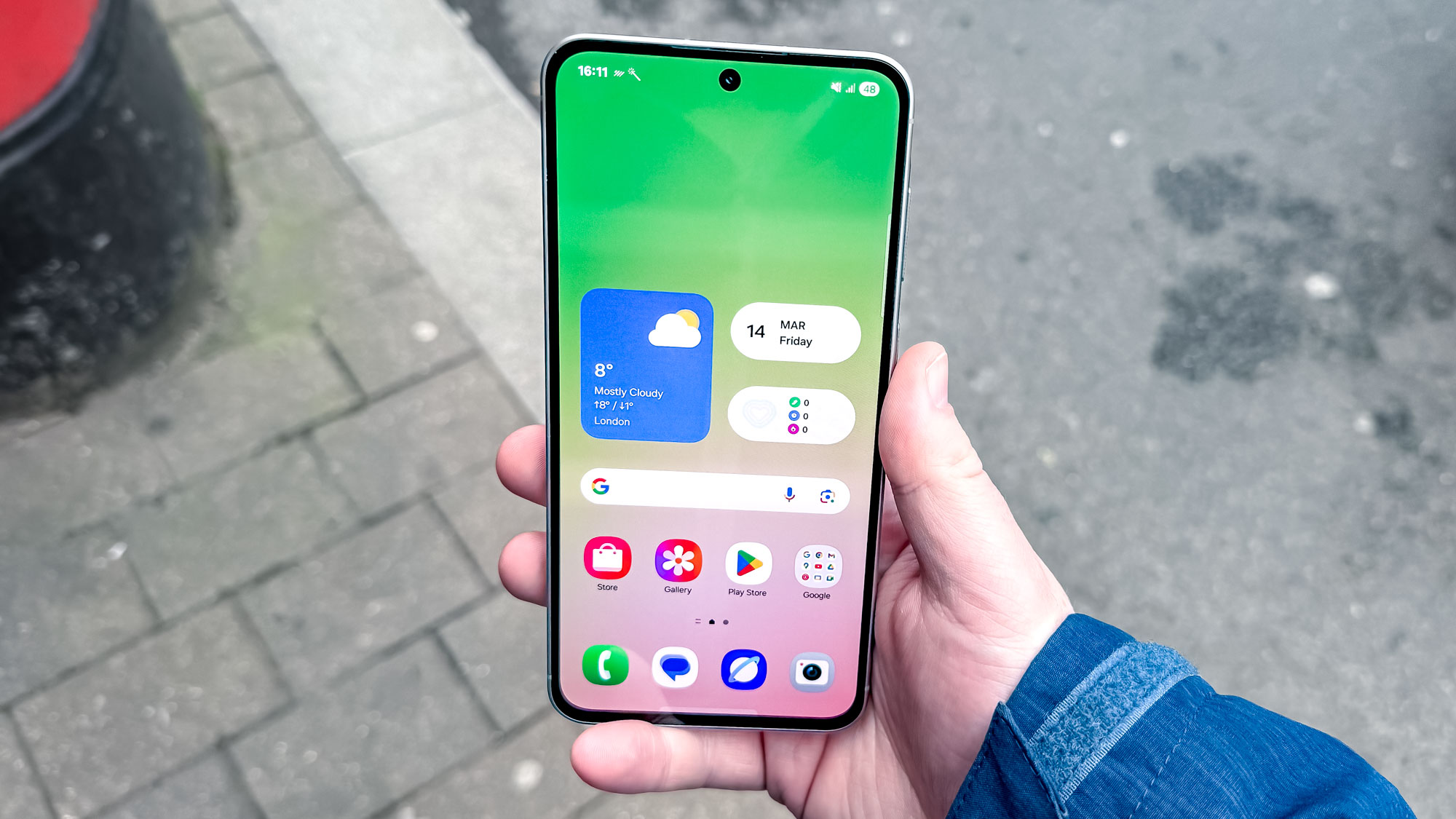
We've yet to get the Galaxy A56 into the TG testing lab, so we can't verify Samsung's promised 1200-nit high brightness mode rating, or its 1900-nit peak brightness. What I can say is that, compared to the "Actua" screen of the Pixel 8a, it is slightly dimmer even when set to 100%. But the extra 0.6 inches of display does help make up for the gap.
Samsung Galaxy A56: Cameras
Samsung's basically imported the Galaxy A56's cameras straight from the Galaxy A55. There's a 50MP main camera, a new 12MP ultrawide (replacing a different 12MP sensor) and a 5MP macro camera on the back, plus an updated 12MP selfie camera on the front. The new front camera's a lower-res sensor than the 32MP one previous Galaxy A models featured, but one which Samsung promises offers improved low-light performance, as well as adds HDR video support.
Let's check out some comparisons versus the Google Pixel 8a. Our first subject is some head sculptures in a small plaza in the City of London. The Galaxy A56 shows off the heads themselves in a brighter color than the Pixel 8a, but the rest of the image lacks color in comparison, with the Pixel 8a showing just how washed-out the Galaxy A56 has made its image overall.
I used the ultrawide cameras of these phones to get a full-height photo of the Gherkin skyscraper. While it doesn't add much more detail, the brighter Pixel 8a image is much more appealing than the darker Galaxy A56 shot.
The Galaxy A56 has a macro camera whereas the Pixel 8a does not, so we're looking at a macro shot from the Samsung against a similar 2x digital zoom image from the Google phone. The Galaxy's image is the brighter one this time, but the 5MP sensor can't pull in details like the 64MP camera on the Pixel can, even when digitally cropping in. The contrast is far better in the Pixel 8a shot too, which really draws attention to the water droplets on this flower petal.
Lastly, it's the selfie portrait test. While the overall color temperature of the Galaxy A56 is a little off, the brighter image is much nicer to look at compared to the Pixel 8a's.
Samsung Galaxy A56: Performance
This is the category I went into my Galaxy A56 review dreading. Samsung's mid-range Exynos chips haven't been impressive historically, and with an Exynos 1580 (with 8GB RAM) driving the A56, I wasn't expecting great results. And unfortunately, my expectations were met.
| Row 0 - Cell 0 | Galaxy A56 | Pixel 8a | iPhone 16e | Nothing Phone 3a Pro | Galaxy A55 |
Geekbench 6 score (single-core/multi-core) | 1,358 / 3,867 | 1,581 / 4,093 | 3,328 / 8,132 | 1,166 / 3,275 | 1,161 / 3,464 |
3DMark Wild Life Extreme Unlimited (score / fps) | 1,248 / 7.4 | 2,375 / 14.23 | 2,644 / 15.83 | 1,067 / 6.39 | 905 / 5.4 |
Adobe Premiere Rush time to transcode (mins:secs) | 3:19 | 0:56 | 0:21 | 1:45 | Not tested |
To focus on the positives first: the Galaxy A56 does better than the Galaxy A55 it's replacing, and beats the Nothing Phone 3a Pro on the Geekbench CPU and 3DMark GPU tests. But the Samsung is a long way behind the Pixel 8a and iPhone 16e, which both use flagship-grade chips. And I can't fathom how slow the Galaxy A56 is at processing video, turning in the single worst result I've seen on our Adobe Premiere Rush test of turning a 4K video into a 1080p one.
Samsung has given the A56 a little extra help with intensive tasks with the addition of vapor chamber cooling, only seen on Samsung's flagship models before now. The influence of this addition was easily felt while gaming, as even when the A56 struggled to keep up with Genshin Impact at maximum settings and the 60fps frame rate setting, it didn't get that warm.
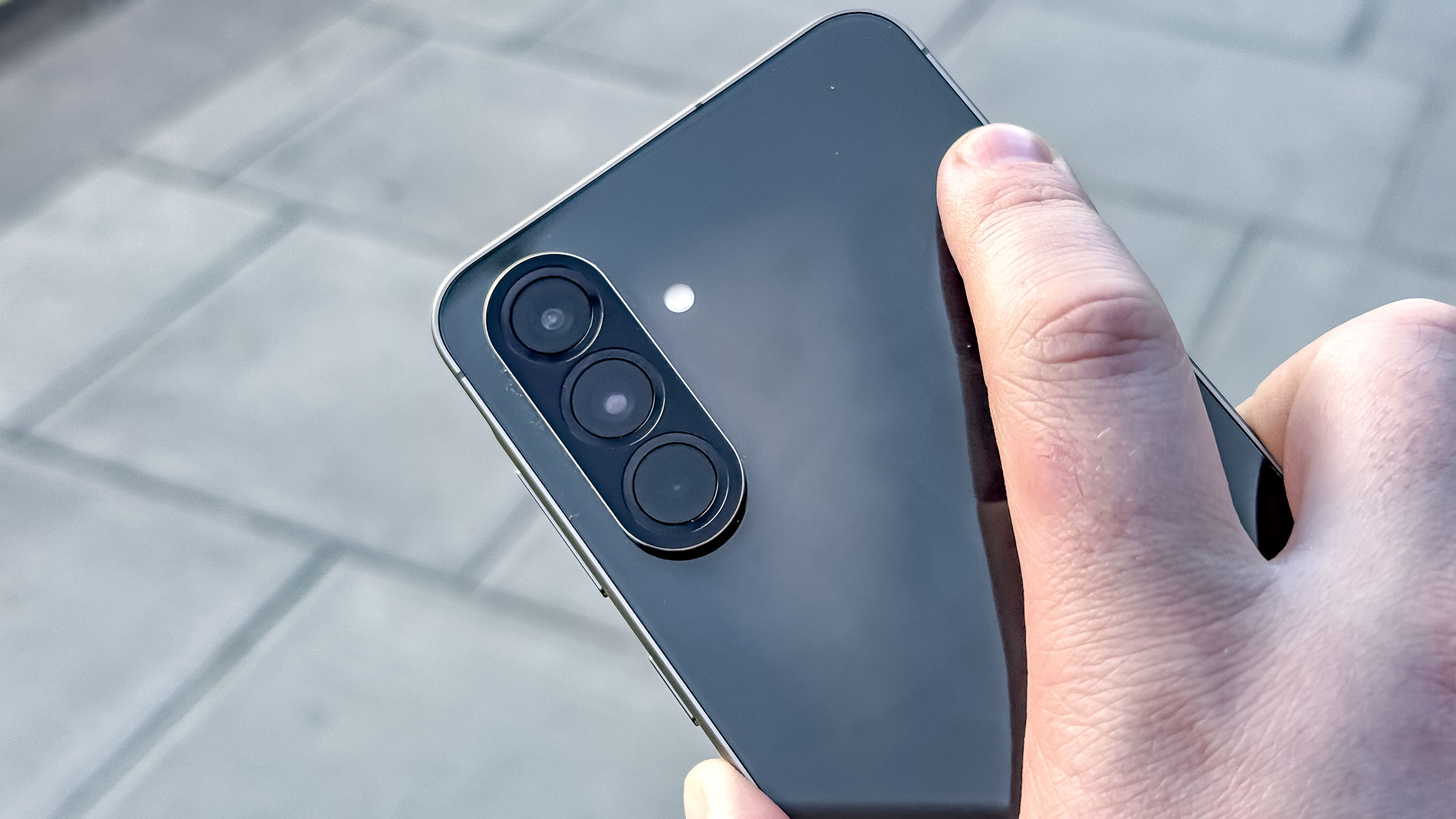
While Samsung hasn't tricked out the Galaxy A56's chipset, it's generous enough to give the A56 256GB of storage by default. This is double the basic storage of all the rival phones we've mentioned here, but it comes at a bit of a cost.
Firstly, this is the only available version to regular consumers. There's no option to pay more to get 512GB or an even higher capacity, or to pay less if you prefer to save money or don't think you'll fill 256GB. The other key factor is that Samsung no longer offers storage expansion via microSD card. This was offered on the Galaxy A55 and older models, and allowed users to pop in up to another terabyte of space. It's a pity to see it unceremoniously dumped like this.
It's also a shame that the 12GB RAM edition of the Galaxy A56 isn't being sold in Europe or North America. Having this much RAM on a phone of this price is a novelty but also practical for performance reasons, and it's quite mean of Samsung not to offer it to us.
Samsung Galaxy A56: Battery and charging
The 5,000 mAh battery in the Galaxy A56 is just as large as previous generations, but Samsung has somehow managed to squeeze much more battery life out of the same capacity. Since we haven't lab-tested the Galaxy A56 yet, I performed my unofficial battery test, which sees how much battery a phone loses after three hours of 1080p YouTube video over Wi-Fi. The Galaxy A56 lost only 14% in this test, which compared to the Pixel 8a and Galaxy A55, which lost 18% and 22% respectively, is a big improvement and a comforting sign of good battery life under more typical conditions.
In a surprising move, Samsung has given the Galaxy A56 45W wired charging, only seen before on the Galaxy S25 Plus and Galaxy S25 Ultra and their predecessors. It's fast for a phone of this price, although there's no brick in the box provided, and Samsung's own 45W charger will set you back £44/$49/AU$84. We'll get back to you when we have charging test results for you, but we'd expect a charger of this power to fill the Galaxy A56 to empty to full in around an hour.
Samsung Galaxy A56: Software and AI features
The "Awesome Intelligence" Samsung advertises for the Galaxy A56 is not quite Galaxy AI but there's still some overlap in features. For instance, the A56 now offers Circle to Search like other recent Android phones, an Object Eraser for tidying up your photos and Best Face for swapping you and your friends' faces to help you make a shot where you're all smiling and looking at the camera together.
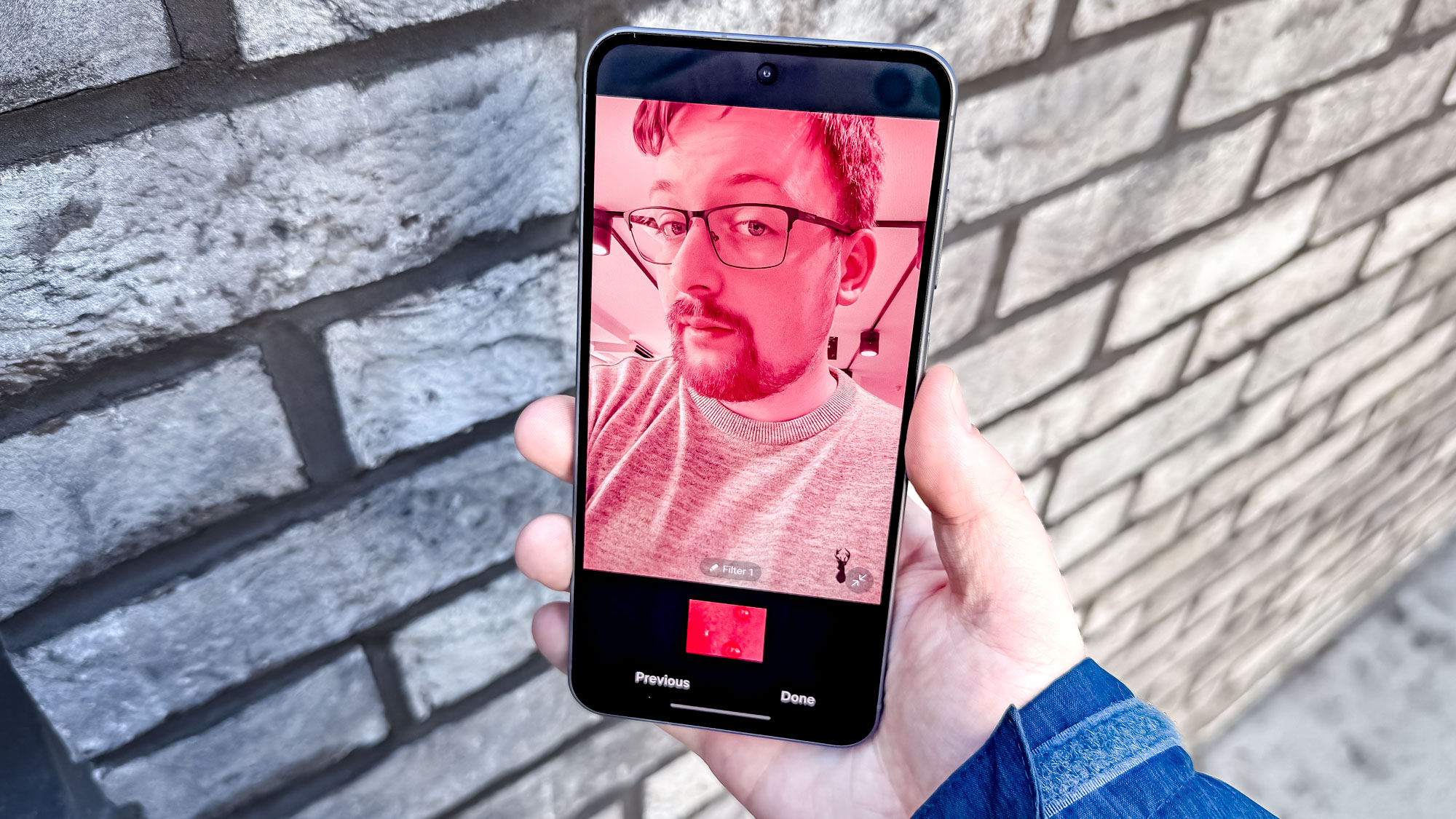
A couple of others to highlight are the filter creator, which allows you to apply the color profile of one image to another to give it a whole new look, and Auto Trim, which can assemble selected video clips to create a montage. Both of these are available on the Galaxy S25 series too, so it's further evidence of Awesome Intelligence and Galaxy AI being closely related despite their names.
Productivity fans will be disappointed to learn that DeX, Samsung's desktop mode for smartphones, hasn't made it to the Galaxy A56. This isn't perhaps a surprise, as no previous Galaxy A model has been able to use it, but it's a pity that the cheapest way to get this very useful feature is via the $600 Galaxy S24 FE.
Samsung has upgraded its software update plan for the Galaxy A56 to six generations of Android and six years of security. That doesn't match Google's seven years of full updates for all its phones, including Pixel a-Series models, but it's still ahead of what any other brand offers for its cheaper phones.
Unfortunately, as one of Samsung's cheaper phones, the Galaxy A56 is afflicted with AppCloud, Samsung's app recommendation system that can't be uninstalled, only disabled. It's not difficult to switch off, but the automated suggestions of more apps to download is still irritating.
Samsung Galaxy A56: Verdict
With the exception of people I know to be keen gamers, I’d not hesitate to recommend the Galaxy A56’s brilliant blend of power efficiency, image quality on-display and via the camera and generous selection of AI features, software support length and default storage for anyone with their budget fixed at the mid-price range. But I don’t know if it would necessarily be my first recommendation to anyone either.
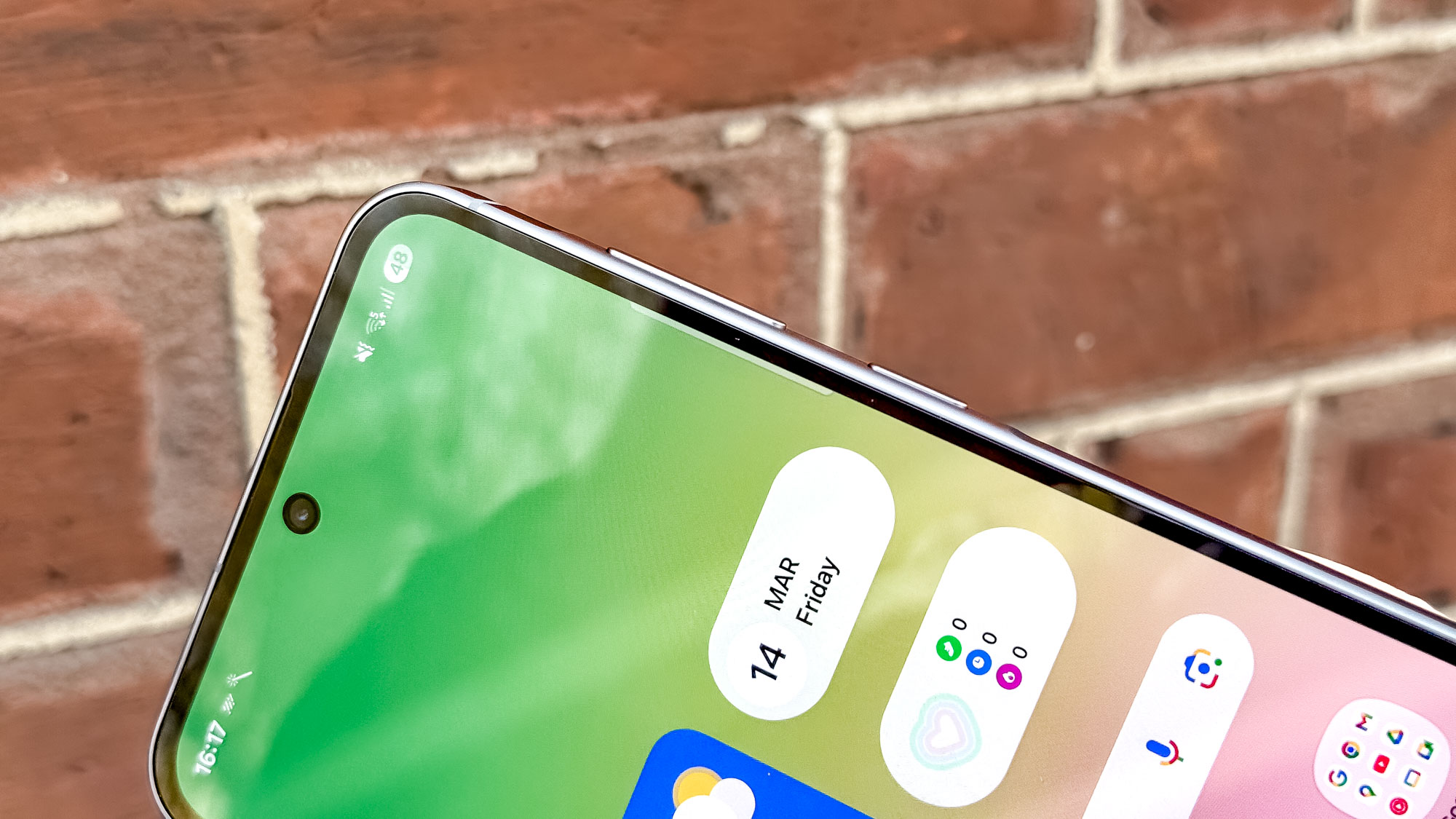
While we’ve not finished reviewing the Pixel 9a at the time of writing, it’s looking like an equivalent to or improvement over the Galaxy A56’s capabilities, aside from the less generous storage and lack of the non-critical macro camera. There’s also the Nothing Phone 3a Pro if you want outright value, plus a brilliant design and an actual telephoto camera on a phone under $500. And the iPhone 16e, while quite a bit more expensive, comes with the style, power and refinement that you expect from the latest Apple hardware.
The best advice I can give about deciding if you want a Galaxy A56 is how happy you are with a jack-of-all trades phone. It can be argued that overall balance is better than excellence in a narrow category, and if that's your outlook on life, you'll get on well with the Galaxy A56.
More from Tom's Guide

Richard is based in London, covering news, reviews and how-tos for phones, tablets, gaming, and whatever else people need advice on. Following on from his MA in Magazine Journalism at the University of Sheffield, he's also written for WIRED U.K., The Register and Creative Bloq. When not at work, he's likely thinking about how to brew the perfect cup of specialty coffee.
You must confirm your public display name before commenting
Please logout and then login again, you will then be prompted to enter your display name.
